Hotel Hebron - SDH Partner Hotel
Green Key approved
Helgolandsgade 4, 1653 Copenhagen Danmark
- Copenhagen Area
- Zealand
- City Break
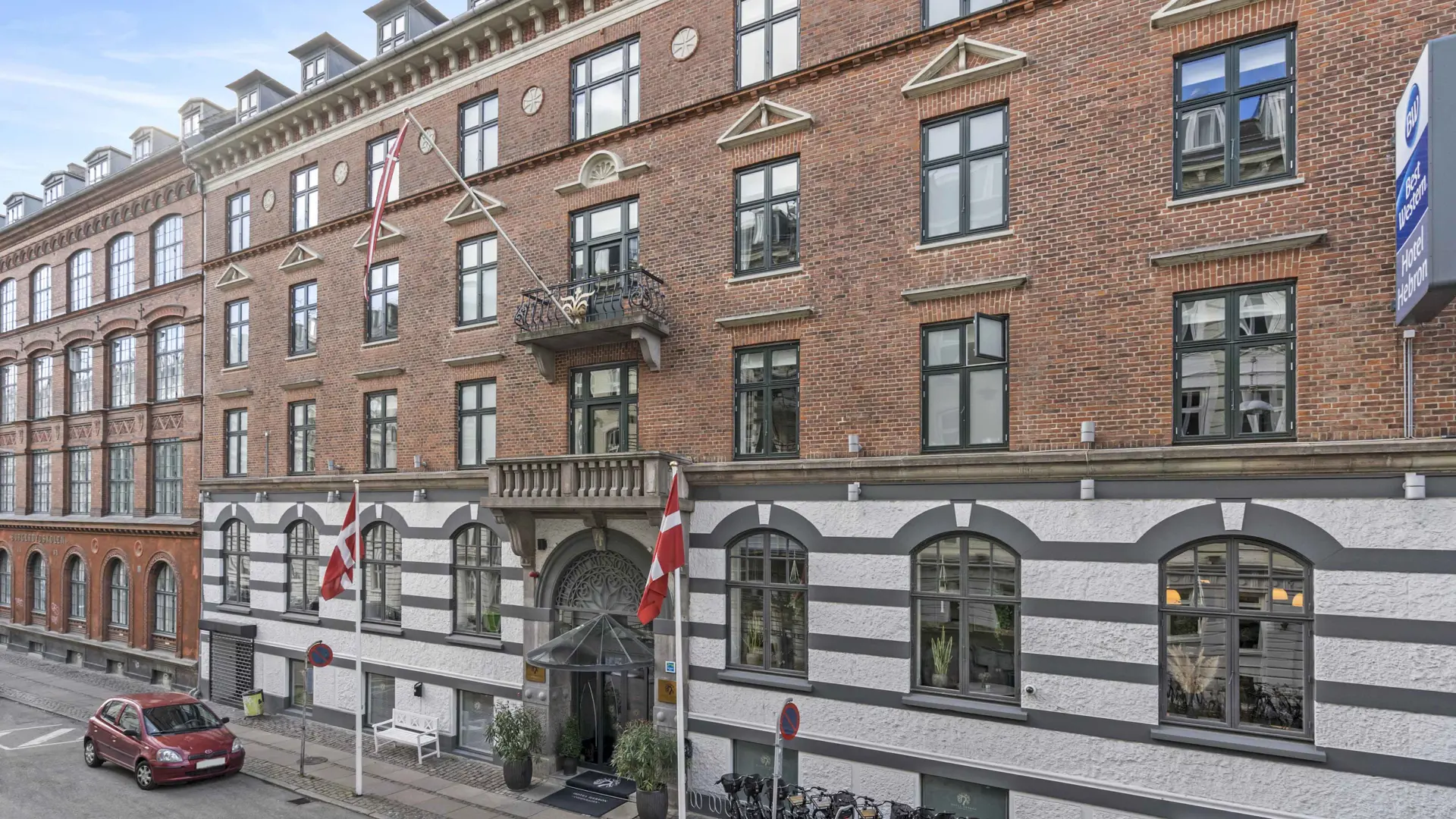
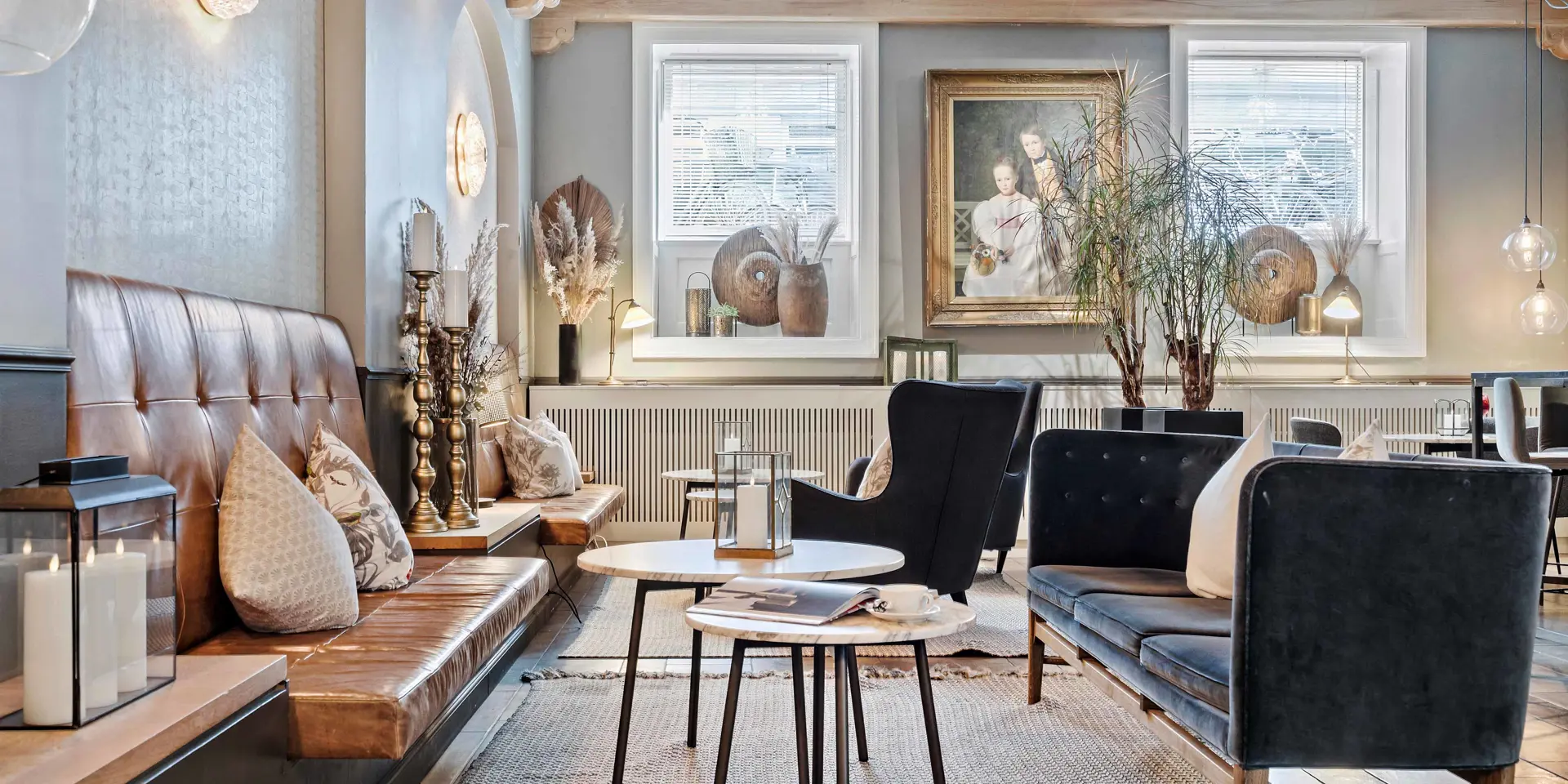
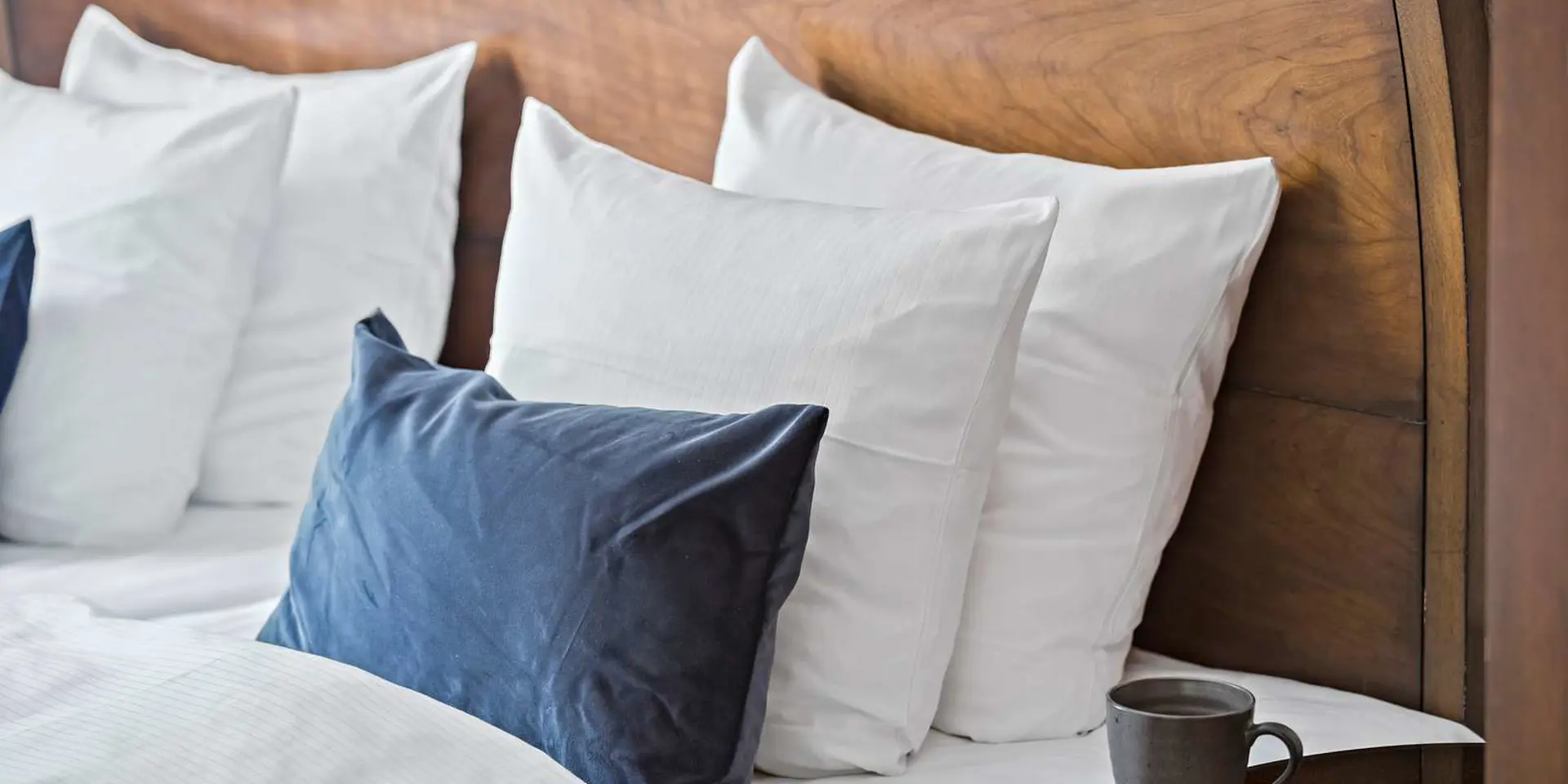
- Copenhagen Area
- Zealand
- City Break
Green Key approved
Helgolandsgade 4, 1653 Copenhagen Danmark



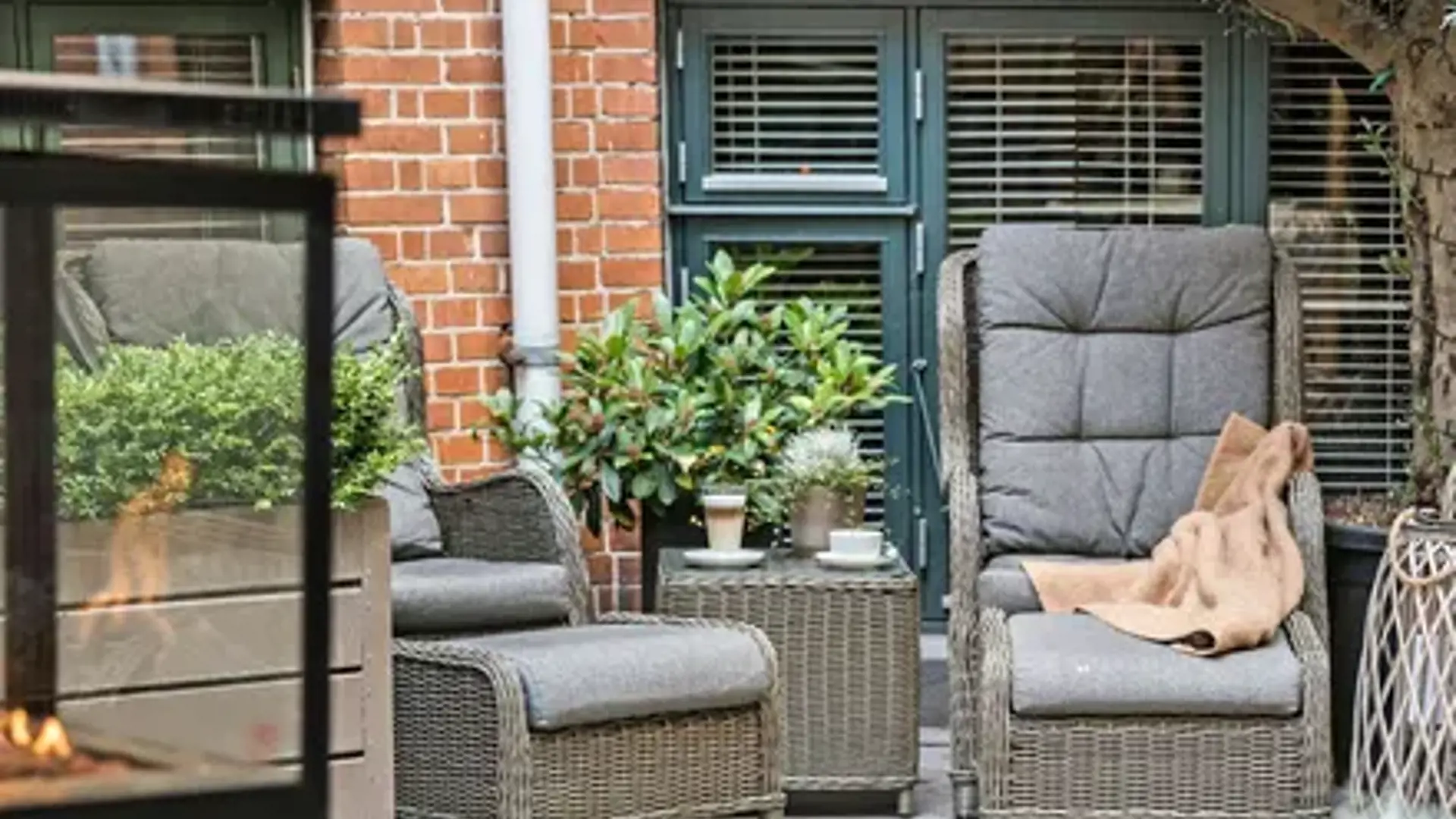
Includes breakfast
Includes per person per night:
Please note, payment by gift voucher issued by Small Danish Hotels is not possible.
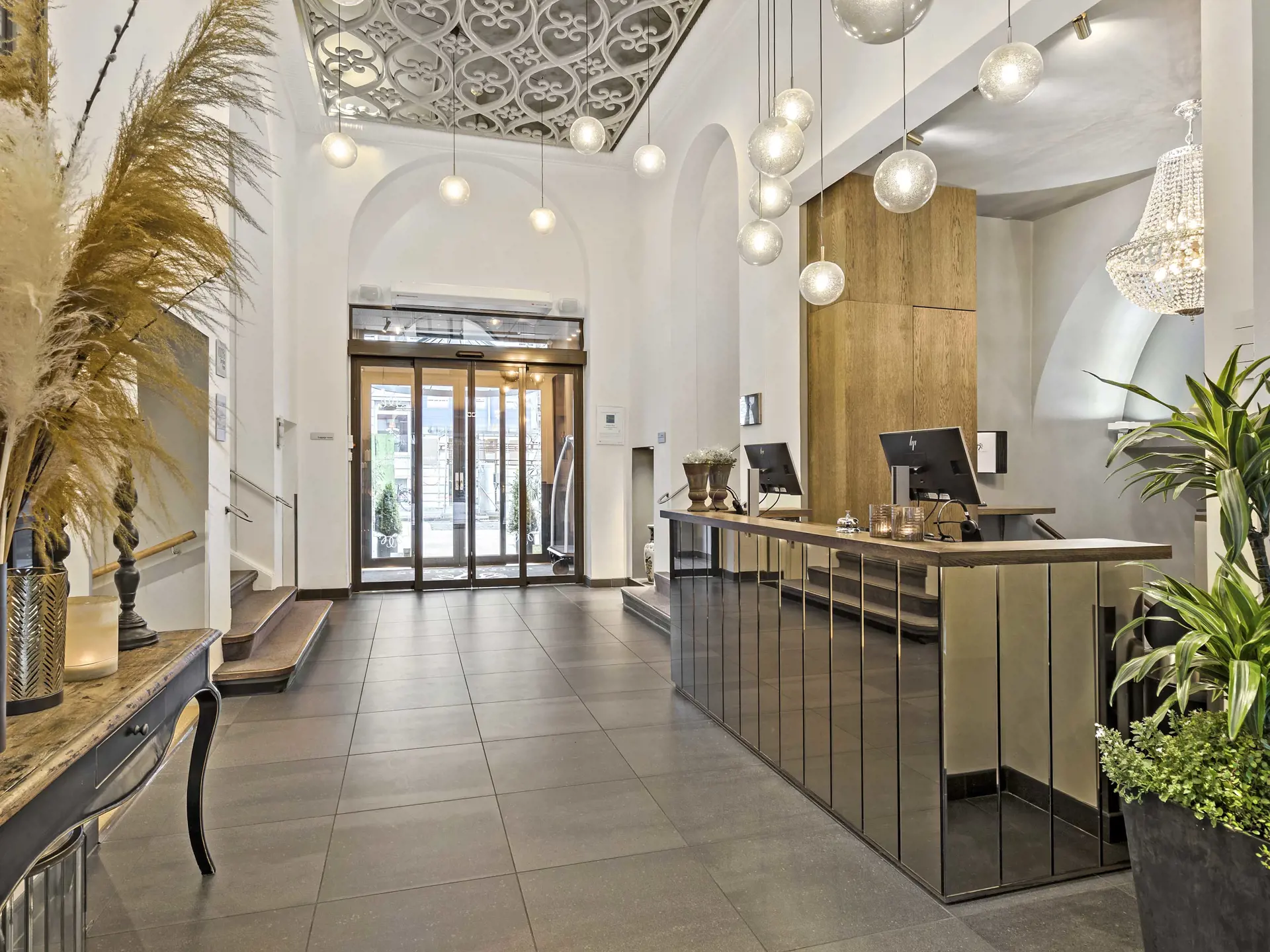
Centrally located in the city center, this Copenhagen hotel is minutes from the beautiful Tivoli Gardens and 'Stroget', Europe's longest pedestrian street. Situated in the heart of Copenhagen, the Best Western Hotel Hebron is the perfect lodging for both regional and international travelers. This beautiful Copenhagen hotel is centrally located close to many of Copenhagen's best shops and international cafe's. The hotel is also close to a variety of recreational activities nearby such as sailing, surfing, boating and golf. The Best Western Hotel Hebron offers 99 guest rooms and suites each complete with cable satellite television with international channels and free high-speed wireless Internet access.
The hotel also features a friendly staff, business services, car and bicycle rental, and meeting space to accommodate and cater for 33 people. The breakfast restaurant offers a complimentary full-breakfast buffet each morning. The hotel is located close to Denmark's most famous attraction, Tivoli Gardens and the 'Stroget', Europe's longest pedestrian street. Families especially will appreciate being close to the local amusement park and Copenhagen Zoo. Guests will also be only a short distance from the Royal Theatre, the Parken symphony and the Royal Opera.
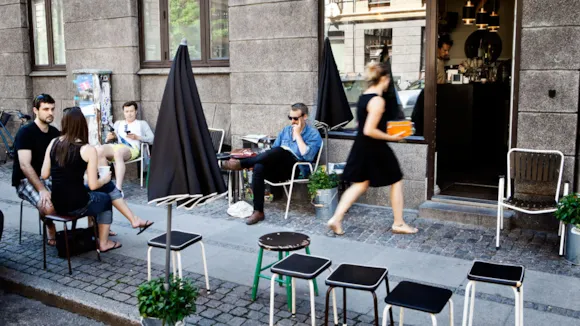
0.15 km
The infamous red light district and former working-class area of Copenhagen, Vesterbro, is actually one of the hippest areas in the Danish capital. As early as back in 2001, Wallpaper magazine proclaimed Vesterbro Copenhagen's hippest quarter, and in 2014 it made no. 4 on Thrillist's top 10 most hipster neighbourhoods on Earth.
The turnaround really began with the transformation of the old cattle market Øksnehallen into a light and stylish exhibition hall. The district is situated within walking distance of Copenhagen city centre, right behind the Central Station. It is one of the most fashionable places in Copenhagen - not just to live - but to shop, eat, drink and have a great night out.
Along Vesterbrogade and Istedgade, where you will find the original red light district on the first stretch from Copenhagen Central Station and up, you will find plenty of bars, restaurants, and designer stores. Are you looking for a fancy dinner or a fun night out go to the Meatpacking District where new restaurants and cool bars crowd the area. The quarter even boasts its own food street, frenchy Værnedamsvej – a gourmet’s paradise with specialist cheese, wine, fish and chocolate shops, as well as cafes and grocers - on the border between Frederiksberg and Vesterbro. Vesterbro is also known as Copenhagen V.

0.24 km
At the southern end of Skt Jørgens Sø lake, you’ll find a striking modern building offering you a ticket into space. A visit to Copenhagen’s planetarium will put stars in the eyes of the whole family.
Designed by MAA Knud Munk and opened in 1989, the planetarium is named after the Danish astronomer Tycho Brahe, and aims to educate and entertain the whole family through exhibitions and 3D and IMAX films.
Immerse yourself in the starry sky, watch movies in the large Dome and explore the exhibitions. The Dome is the heart of the Planetarium and is the largest in Northern Europe, with a big screen offering you a unique experience, that makes you feel like you are part of the movie. From films about volcanoes and astronauts to space exploration and animations suitable for younger children, there is a wide variety of programming. Check the website beforehand to find out the current program and show times.
No matter what film you choose, it always starts with a journey into space and a presentation of the current starry sky.
Most movies and shows will be narrated in Danish. However, if you would like to hear the English narration, headphones are available at the entrance.
A ticket gives access to all exhibitions and one film. During school holidays and weekends, you can also experience shows and stories about the universe, with free guided tours in the exhibition area.
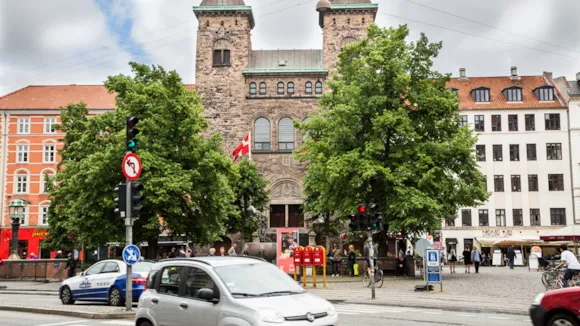
0.35 km
The Elias Church was designed by Martin Nyrop the same architect who built the Copenhagn City Hall.
The church, centrally located at Vesterbro Torv, was opened May 17 1908 after years of hard work to gather the funds for this ambitous project.
Today Elias Church is a popular city church.
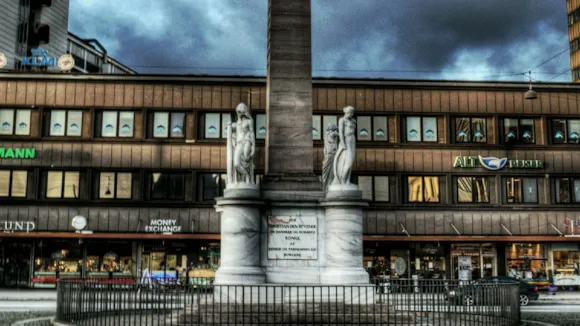
0.28 km
The Liberty Column in Copenhagen is a 20 meter tall Obelisque, erected in memory of the peasant reforms, 20 June 1788. These reforms led to the abolition of the adscription.
The four symbolic female figures on top of the column symbolise Bravery, Civic Virtue, Fidelity and The Industrious Cultivation of Land.
Connection to the construction of Copenhagen Central Station, The Liberty Column was moved a few meters from its original place.
In 1850-51, the monument was renovated for the first time. In 1999, it was unveiled after a huge renovation where the Obelisque and the four statues were replaced by exact copies.
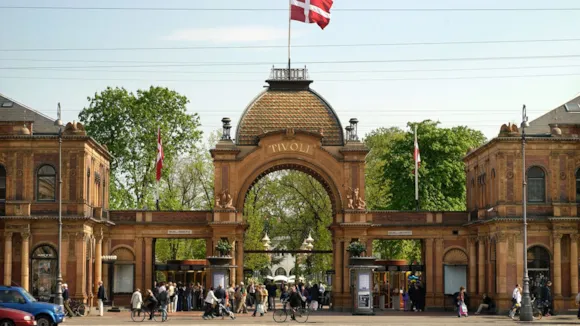
0.38 km
Tivoli is a playground for young and old and a spot so full of wonder that it inspired Hans Christian Andersen and Walt Disney. Whether you come for the gardens, music or rides, you’ll have a blast.
Tivoli Gardens was founded in 1843 and has become a national treasure and an international attraction. Fairytale writer Hans Christian Andersen visited many times, as did Walt Disney who even found the inspiration for his own Disney World here. When the garden was founded it was placed outside the city’s moats, but today it’s located right next to the Central station and within walking distance of City hall.
Part of Tivoli Gardens' secret is that there is something for everyone. The scenery is beautiful with exotic architecture, historic buildings, and lush gardens. At night, thousands of coloured lights create a fairytale atmosphere that is completely unique. It has quirks and charm, and details for you to discover – you might catch a glimpse of the guinea fowls or peacocks running freely through the gardens.
The rides are all designed to match Tivoli's architecture and gardens. Some rides are wonderfully nostalgic, while others will match the expectations of the keenest thrill seekers. Tivoli’s oldest and most popular ride, the wooden Rollercoaster from 1914, is one of only seven rollercoasters worldwide which have a brakeman on board every train. In contrast, you’ll also find Vertigo, which will turn you upside down at 100 km/h. It was voted Europe’s Best Ride in 2014.
The newest ride of all is Villa Vendetta, Denmark's largest permanent haunted house complete with actors, where guests embark on a journey through 12 different rooms spread over 800 spooky square meters.
TRAVEL TIP: With a Copenhagen Card in your hand you get free admission to Tivoli and over 80 attractions as well as free public transportation in the whole capital region.
When it comes to food, Tivoli is equally diverse. Lots of people will bring picnics to the garden, but you can also choose from Tivoli's broad selection of restaurants. You'll find everything from traditional Danish cuisine to French bistro to gourmet burgers. Tivoli has a seafood bistro, Figaro as well as the world-renowned burger chain, Gasoline Grill, and one of the city's very best vegetarian restaurants, Gemyse.
If you’re up for a more relaxed, food-stand kind of food, Tivoli has got that as well. On the corner of Tivoli, towards the Central Station, you’ll find Tivoli Food Hall. The architects behind the building also created the stunning glass pyramid of the Louvre in Paris. Inside you’ll find a variety of different cuisines, from healthy Islandic dishes at Glò to delicious, hot flatbread at North-African Wakha, and everything in between.
You could also try the classy Nimb and Nimb Hotel, which are situated in Tivoli Gardens. They have a variety of different restaurants – for example in the restaurant Fru Nimb, you can get traditional Danish smørrebrød (open-faced sandwiches). There is also the outstanding patisserie Cakenhagen to enjoy for its coffee, cakes and champagne.
Want to know more about dining in the city centre? Check out our guide.
The music program in Tivoli has exciting events to offer every year no matter your age or genre preferences. Besides major events such as Friday Rock and Summer Classic, there is live music in Tivoli every single day. See Tivoli Gardens' music calendar.
Tivoli has opened throughout the year with a variety of themed attractions. Halloween, Christmas, winter and summer each have their own uniquely themed season in Tivoli, where the gardens are redecorated to convey the cosy winter vibes, the hearty Christmas feeling, and the nostalgic long summer days and scary Halloween. Check out the opening hours of each season on Tivoli's website.
Tivoli is among Copenhagen's top attractions. You can learn more about the top attractions here.
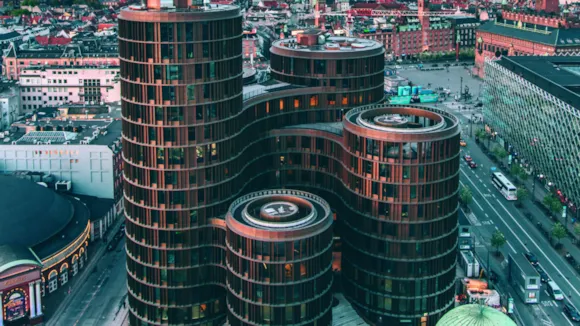
0.44 km
Axel Towers is designed by the talented Lene Tranberg from the award winning Danish architect firm Lundgaard & Tranberg Arkitekter.
The architect firm is also known for the Tietgen Dormitory, SEB Headquarters, The Royal Playhouse and Ofelia Plads.
Axel Towers is the vision of new Danish architecture, gathering people who live and work in the city by featuring both offices, shops, eateries, public gardens and restaurants. The Michelin-starred restaurant AOC opened their 'sibling restaurant', TRIO, on the 9th and 10th floor in autumn 2017.
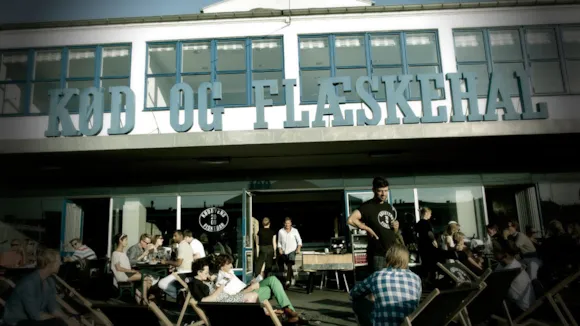
0.52 km
The Meatpacking District is an area of Vesterbro that has housed the meat industry for many decades. It consists of three separate areas called the white, gray, and brown Kødby according to the color of the buildings.
In the early 2000s, when the City of Copenhagen realized that the functionalist buildings from the 1930s in Halmtorvet might interest other than just butchers, a vision of a new cultural melting pot began to take shape. The Meatpacking District is now a creative cluster where Copenhagen's new and trendy places open, such as restaurants, nightclubs and art galleries - alongside the slaughterhouses that still operates here.
The Meatpacking District is one of Copenhagen's most popular places to go out. Among other things you find art galleries, such as V1, Gallery Poulsen, and Bo Bjerggaard, the tea shop Aunt T, and Butcher's Lab - a combined gallery and gym. The Meatpacking District is also home to a variety of restaurants. Try the organic BioMio, some of the city’s best burgers and pizza, wine and dine at Paté Paté, or eat fresh fish at Fiskebaren.
The area is known for a lively nightlife with Jolene, Mesteren og Lærlingen, and Bakken right next to each other. The buildings and facades are listed, so you will not find any big name signs on the facades. Therefore, it can sometimes be a little difficult to navigate. Likewise, many restaurants, bars and galleries preserved the old slaughterhouses tiles and raw frames.
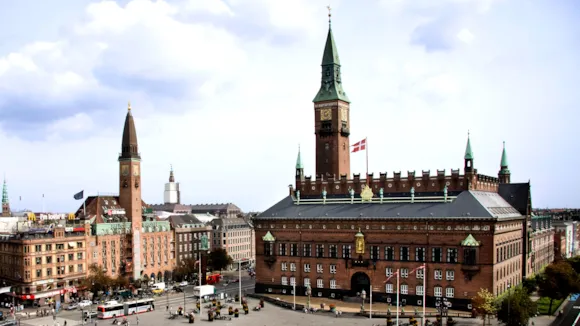
0.62 km
One of Copenhagen’s main squares, City Hall Square or Rådhuspladsen is in front of the City Hall. It marks the start of the shopping street Strøget and is a key location for events and demonstrations.
It's an important public gathering space for the city – people gather here for demonstrations, to pay tribute to returning sports heroes, for big concerts, and for outdoor exhibitions and events including Copenhagen Pride. It's also the site of a hot dog stand, and occasionally plays host to flea markets.
The square is on the site of the city's former hay market and has been redesigned many times over the years, the most recent being in 1995-6.
Among the sculptures in the square are The Dragon Fountain, showing a fight between a bull and a dragon, and a statue of Hans Christian Andersen. If you look to the Richs Building from the square, you can also see The Weather Girl, a gilded sculpture of a girl with a bike that tells the weather. On rainy days, it rotates to show her walking her dog with an umbrella.
There is a bus hub on the northern side of the square, along with a metro station, making it a key public transport hub.

0.6 km
The Dragon Fountain at Copenhagen City Hall Square was made from a model in 1889 and was originally intended for Amagertorv but lost to the The Stork Fountain.
In 1904 a bronze basin was erected with decoration inspired by ancient Greek ornamentation in Copenhagen. On the edge of the basin were placed three dragons, all spouting water and rather larger than sketched in the 1889 project.
In 1908 the fountain was surrounded by a low, outer basin with a granite edge after a design by Skovgaard and Bindesbøll, but not until 1923 was the Dragon Fountain completely finished with a bull battling with a dragon.
Large and small dragons
So as not to squeeze the group at the centre, the three dragons on the edge of the basin were made rather smaller and thus in keeping with the original project. The large dragons are today on the balustrade in front of the Town Hall.
At the same time, the outer basin’s granite edge was decorated with six bronze baskets of fruit placed on every other one of the twelve stone consoles. This new version of the spring was inaugurated on 4 June 1923.
Moved and seperated
Vestre Boulevard was widened and altered in 1954 and at the same time had its name changed to HC Andersens Boulevard.
The entire fountain was moved 25 metres into the square, and the outer granite basin with the bronze baskets was removed. This was set up in Brønshøj Torv in 1973, but removed again in 2001.

0.9 km
Go time travelling at Denmark’s key history museum. The National Museum showcases everything from Viking treasure and the Egtved girl’s grave to Egyptian mummies, Renaissance art and the present day.
Among the many treasures to discover, visitors are invited to Meet the Vikings in an exhibition that reconstructs what Queen Tove may have looked like, alongside warrior beserkers, housewives and peasants, many shown wearing jewellery from Denmark's largest treasure troves.
Another key permanent exhibition on Danish Antiquity includes prominent national treasures such as the more than 3,000 years old Sun Chariot, the Bronze Age Egtved Girl, and an incredible collection of archaeological finds from the Viking Age. You can also see the Huldremose Woman, whose well-preserved remains are estimated to date back to the first decade of the first century AD.
The National Museum also boasts a very large ethnographical collection, a collection of classical and near eastern antiquities, a coin- and medal collection, and a toy museum. You can also visit the Victorian apartment Klunkehjemmet, practically unchanged since 1890. Note that it has different opening hours.
You can tour the museum in an hour with a self-guided tour. They include The History Tour of Denmark, The Family Tour, and The Tour around the World. In July, August, and September there are guided tours in English.
One section, dedicated especially to the very young museum visitor, is The Children’s Museum. What was the school of your great-grandmother like? Try a trip on a Viking ship, discover a kitchen from the Middle Ages, or amire the beautiful colors and feel the smooth silk in a shop from Pakistan. This hands-on part of the museum is great for children who want to play and explore.
Besides the café and a museum shop, the museum is home to the excellent Restaurant SMÖR. Here you will find Danish classics like smørrebrød (open-faced sandwiches) with a new twist. On the weekends you can try The National Museum's giant cake table with everything you could wish for. The restaurant focuses on local, seasoned ingredients and sustainability. No entrance is required when visiting the café, shop, or restaurant.
It's not just the exhibits in the museum that have historical significance – the building does too. The National Museum is located in The Prince’s Palace, built by court architect Nicolai Eigtved in 1743-44. It is no longer used by the royal family, but the Great Hall still appears elegant enough to fit princes and princesses.
The Gallery consists of a wide corridor that linked rooms and sleeping quarters and featured plenty of space for exquisite handicrafts. The stucco in the ceiling, the panels, and the oak parquet floor are all thought to be original. The furniture and stove are from the early 18th century.
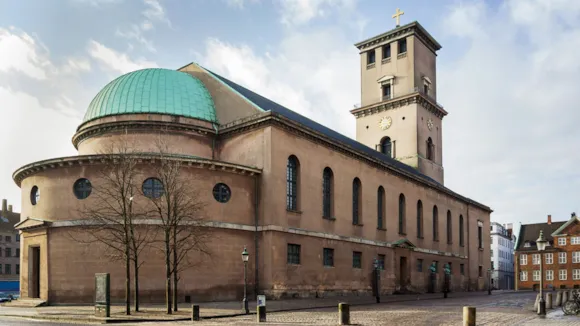
1.01 km
The Copenhagen Cathedral in its present shape is an unpretentious building in Neo-Classicist style designed by the architect C.F. Hansen. The foundation stone was laid by King Frederik VI in 1817, and the solemn consecration took place on Whitsunday 1829.
However, the site of the present cathedral has housed a church ever since Bishop Absalon, the founder of Copenhagen, had a small chapel built on the premises. The original church was erected at the highest point in the town around 1200.
The church has seen many important events throughout Danish history. This is where King Valdemar Atterdag gave away his nine-year-old daughter Margrethe - later Queen Margrethe I - in marriage in 1363, in 1855 the funeral of Søren Kierkegaard, and 2004, Crown Prince Frederik and Australian Mary Donaldson were married here.
Thorvaldsen's sculptures
The statues of Christ and the twelve apostles immediately capture the attention of the visitor. Above the altar, Christ extends his arms in a welcoming gesture, while the apostles watch from the sides of the nave. Judas has been replaced by Paul.
According to legend, Thorvaldsen resented the fact that his statues were to be placed in the niches of the church, and therefore he deliberately made them so tall that they had to be moved out onto the floor – a move that does them justice.
Battle of Copenhagen
In 1807, the cathedral was hit by an incendiary rocket during the British bombardment led by Admiral James Gambier and General Lord Cathcart. The bombardment resulted in the cathedral's burning down.
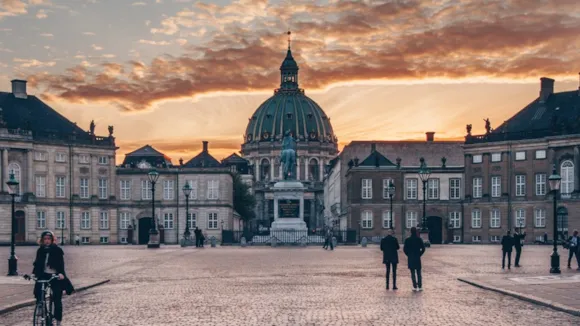
2.38 km
At Amalienborg Palace in the heart of Copenhagen, you can visit the seat of one of the world's oldest monarchies and go behind the scenes in a real royal palace. The palace is a must for anyone with a taste for royal history. Don't miss the palace square where you can watch the unforgettable changing of the guards.
Amalienborg is famous for its royal guard, known as The Royal Life Guard. Every day, you can watch the changing of the guards as they march from their barracks by Rosenborg Castle through the streets of Copenhagen to Amalienborg, often accompanied by music. The changing of the guard takes place at noon.
Amalienborg is made up of four identical buildings. These are Christian VII's Palace (also known as Moltke's Palace, used as a guest residence), Frederik VIII's Palace (also known as Brockdorff's Palace, home of His Majesty King Frederik X, Her Majesty Queen Mary, and their children), Christian IX's Palace (also known as Schack's Palace, home of Queen Margrethe II) and Christian VIII's Palace (also known as Levetzau's Palace, used as a guest palace for Prince Joachim and Princess Benedikte). It's in this building you'll find Amalienborg Museum.
A visit to Amalienborg Museum gives you access to the private interiors of the most recent kings and queens along with an exhibit on the monarchy today with its many traditions. It's a behind-the-scenes trip sure to delight any royal fans.
The scope of the museum stretches back 150 years to Christian IX and Queen Louise, who were known as "the in-laws of Europe" because four of their children ascended to the thrones of England, Greece, Russia, and Denmark.
The rooms of Christian IX, Queen Louise, and their descendants are still intact, so a visit is like a journey through time. Each room reflects the modern taste of its period and the personalities of the kings and queens, whether it is in military, Victorian, or knightly style.
TRAVEL TIP: With a Copenhagen Card in hand you get free admission to Amalienborg and over 80 attractions as well as free public transportation in the whole capital region.
The large garden room offers an insight into modern royal life and the monarchy in the 21st century. Royal life entails many duties and traditions, and there are plenty of opportunities to explore them and gain an understanding of what it means to be royal today.
On most days, there is admittance to the Gala Hall and the other magnificent rooms on the Piano Nobile. The royal reception rooms are still used by the royal family for representative purposes.